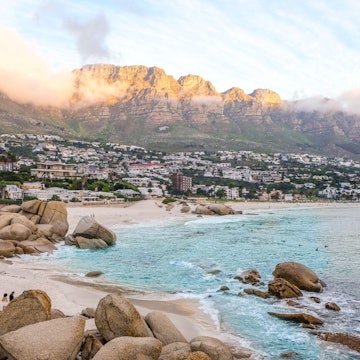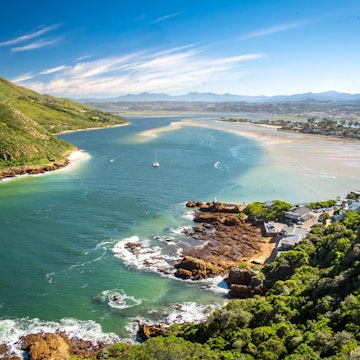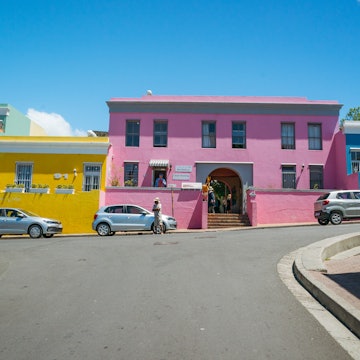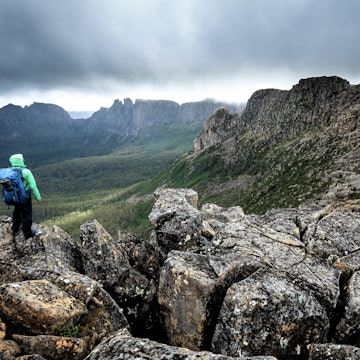

Hermanus Cliff Path in South Africa's Western Cape. JaySi/Getty Images
South Africa’s varied landscapes make it a brilliant destination for hikers. From rugged mountain trails and unmarked wilderness routes to pretty coastal paths and meanders through a forest canopy, the country offers something for all levels of walkers. We’ve put together a selection of some of the best hikes in the country; whether you’re strolling with little ones or looking for a mental and physical challenge, you’ll find something worth lacing up your boots for.
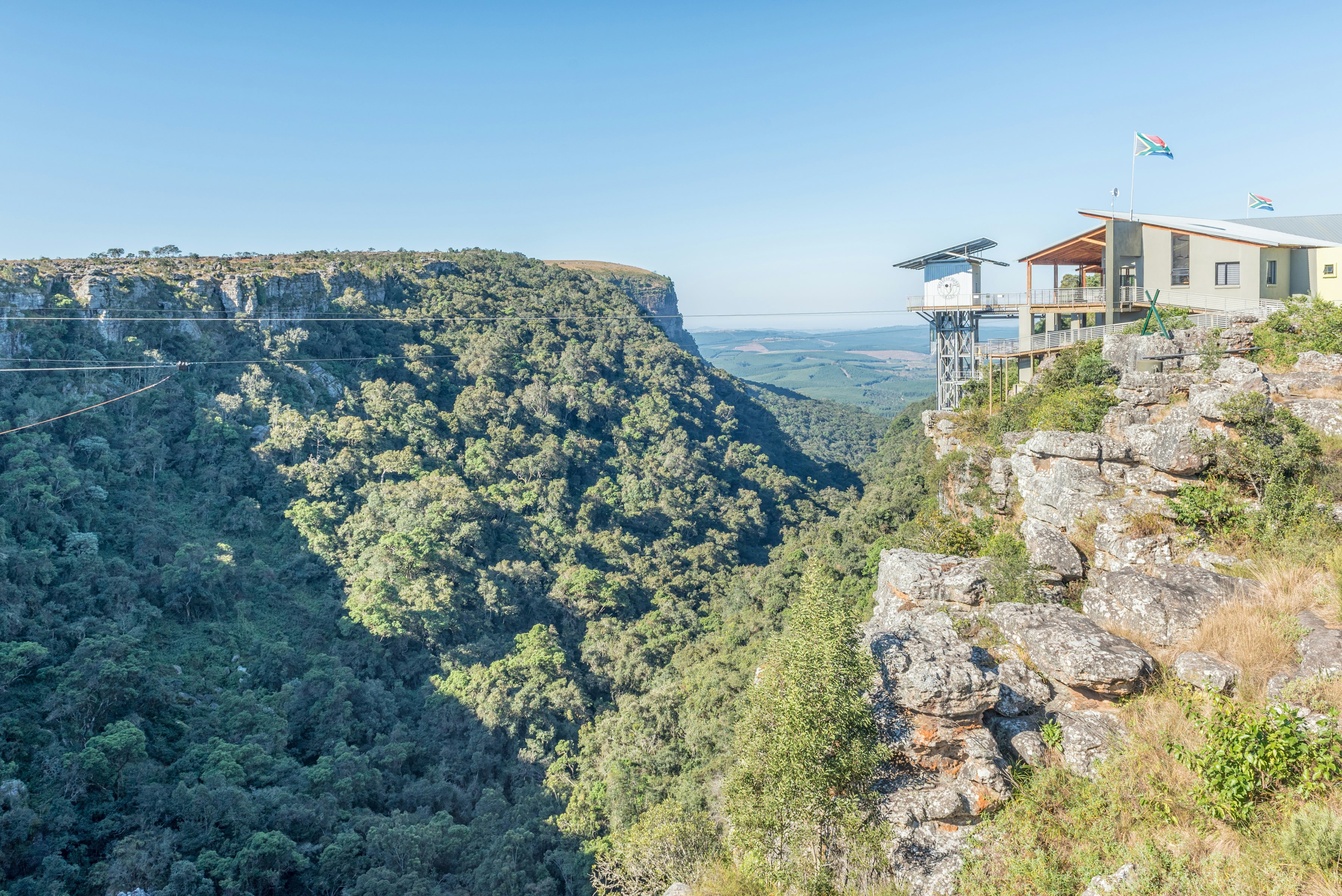
1. Graskop Gorge Walk, Mpumalanga
Best for nature-loving families
Distance: 0.6km (0.3 miles)
Estimated time to complete: 1 hour
Level of difficulty: Easy
The fascinating Graskop forest walk in Mpumalanga has a novel beginning: in order to reach the boardwalk trail you have to take a glass elevator 51m (167ft) down a cliff face, into the forest canopy at the base of the gorge. Once down there, prepare to take your time: all along the easy 600m (1969ft) trail there are excellent information boards packed with details about everything from butterflies and lichen to mushrooms, fossils, frogs and flowers. It’s exceptionally well curated and has been designed to entice the senses. Be sure to dawdle.
Planning tip: The Graskop Gorge Lift Company has a host of adventure activities on site, including a bridge swing. You’ll pay an entrance fee to access the lift and the forest walk; only card payments are accepted.
2. Hermanus Cliff Path, Western Cape
Best accessible amble
Distance: 12km (7.5 miles) of which 9km (5.5 miles) are wheelchair accessible
Estimated time to complete: 2 to 3 hours
Level of difficulty: Easy
Hermanus is the whale-watching capital of South Africa, and the town’s famous Hermanus Cliff Path is arguably the very best place from which to spot the marine mammals that draw thousands of visitors each year. The 12km-long (7.5-mile) path skirts the coastline, squeezing between rugged rocks and delightfully diverse vegetation, and offering panoramic views of the Indian Ocean. There are plenty of benches along the well-maintained path, which really is best walked slowly as there is so much to take in. From scanning the ocean for whales and dolphins, to spotting birds (including the African black oystercatcher and Cape Batis), to looking out for otters, mongoose and dassies among the fynbos vegetation (unique to this part of the world), there’s a lot to hold your interest.
Planning tip: Whale season is June to December. If you want to walk the trail end to end, park at New Harbour and walk to Grotto Beach. There are so many places to hop onto the path from Hermanus town.
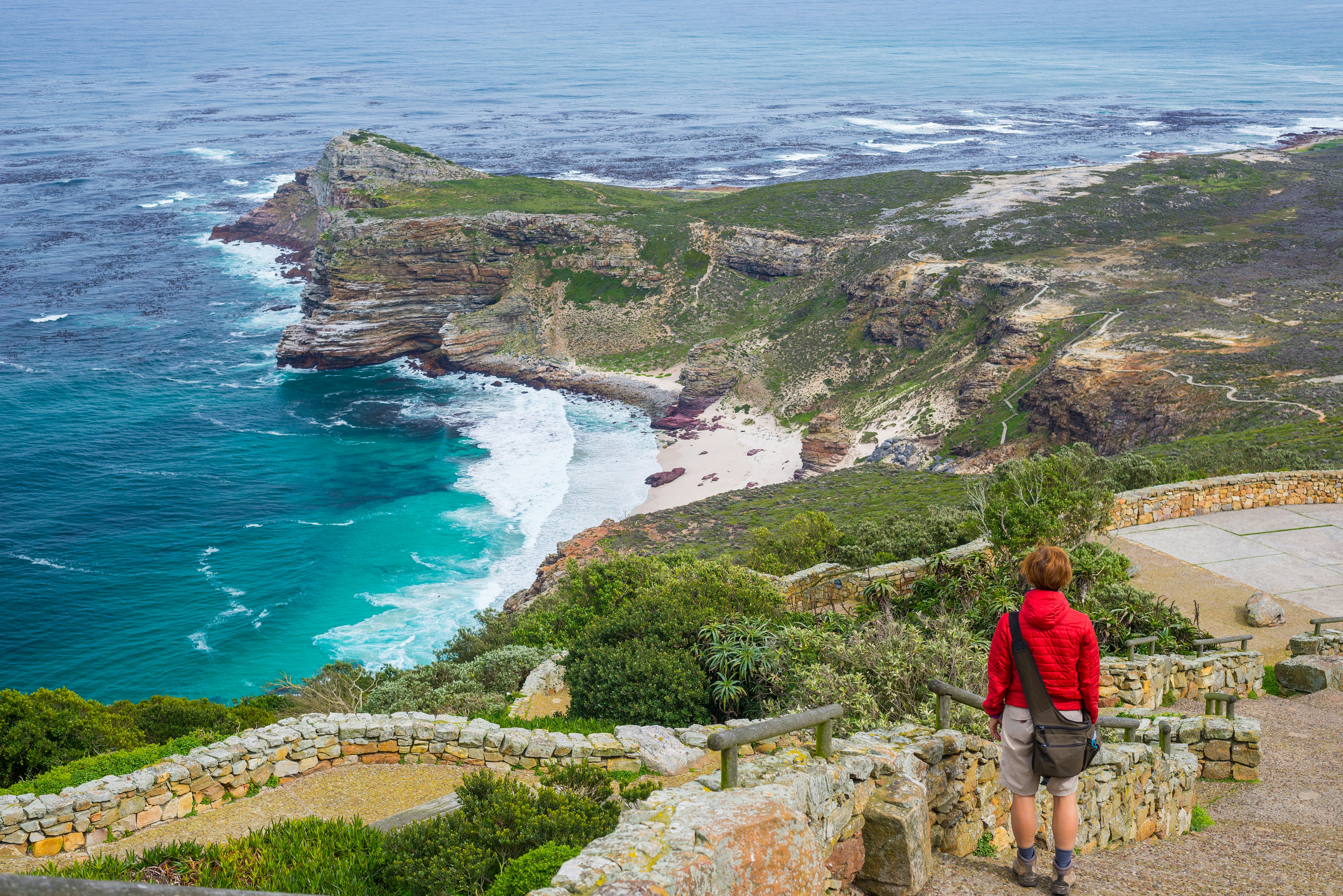
3. Cape of Good Hope Trail, Cape Town
Best for time-strapped travelers
Distance: 34km (21 miles)
Estimated time to complete: 2 days
Level of difficulty: Easy to moderate
An unforgettable way to experience Cape Town’s wild beauty (and outrageously gorgeous seascapes) is to hike the Cape of Good Hope Trail. The stunning two-day trail winds around the southern section of the Table Mountain National Park, which falls within the UNESCO Cape Floral Region World Heritage Site. It showcases diverse landscapes, from fynbos-covered hills (more than 1080 plant species have been recorded in the park) to secluded beaches and dramatic cliffs. Of course, there are panoramic ocean vistas too, and a chance to spot the rare bontebok and Cape mountain zebra.
Planning tip: There are two well-equipped rustic overnight huts, and you’ll need to select one of them when you book; the six-sleeper hut (previously called Erica) has the best sunset and sunrise views. Book your place online. It’ll take around 10 hours to walk the second day, so book your post-trail accommodation around Simons Town or Boulders Beach, which are close to the Cape of Good Hope entrance gate (where the hike starts and finishes).
4. Imfolozi Wilderness Trails, KwaZulu-Natal
Best for encounters with wildlife
Distance: From about 35km (22 miles)
Estimated time to complete: From 3 days
Level of difficulty: Moderate
The exhilarating multiday Imfolozi Wilderness Trails offer a rare chance to explore one of South Africa’s oldest game reserves on foot. Located in KwaZulu-Natal’s Hluhluwe-Imfolozi Park, the guided hikes immerse walkers in Big Five territory – so expect close encounters with wildlife, no-frills bush living and a deep connection with nature. The trails are led by knowledgeable rangers; they’re not for the faint-hearted and offer the chance to experience the wilderness at its most raw and real.
Planning tip: The shortened trail is three days but if you have more time – and are hoping for a truly remarkable wilderness experience – then book onto Imfolozi’s five-day Primitive Trail. You'll sleep every night under the stars, wherever your guide chooses.
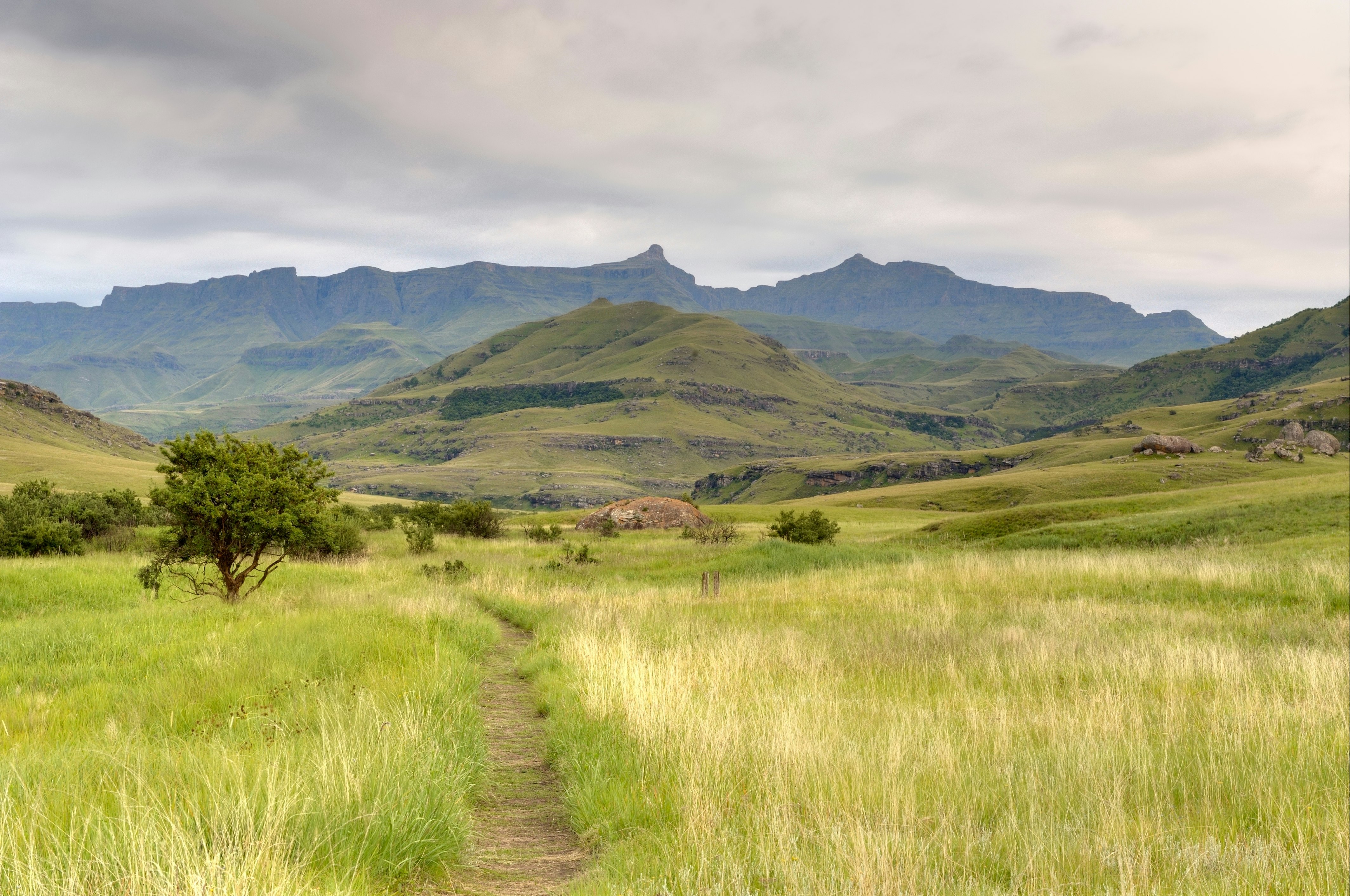
5. Giant’s Cup Hiking Trail, Drakensberg
Best hike through remote mountain landscapes
Distance: 63km (39 miles)
Estimated time to complete: 5 days
Level of difficulty: Moderate
The exquisite Drakensberg mountains, which form the border between Lesotho and KwaZulu-Natal, are South Africa’s premier hiking destination and while there’s myriad day and overnight walks in the area, the only hutted hike here is the Giant’s Cup Hiking Trail. It’s outrageously beautiful, and will tug at the heartstrings of anyone whose soul soars around wild mountain vistas. The trail begins along the dramatic Sani Pass (near Underberg) and ends at the Bushman’s Nek nature reserve, southwest of Underberg; it skirts the base of the Southern Drakensberg and meanders across rolling grasslands, through indigenous forests and very peaceful valleys. Views aside, highlights of the trail include excellent examples of San rock art and, during spring, wildflowers.
Planning tips: You need to book with Ezemvelo KZN Wildlife; it’s best to email them rather than rely on the website (bookings@kznwildlife.com). The official trail booklet contains plenty of useful info. Day 1 is the longest so arrive in the area the day before; there is no accommodation at the trailhead, so book a stay in Underberg or Himeville. You’ll be staying in rustic huts and need to carry all of your provisions during the hike, but some companies, including Slackpacker SA and Active Escapes, offer slackpacking assistance.
6. Wild Coast, Eastern Cape
Best hike for culture and coastal wilderness
Distance: Varies
Estimated time to complete: From 2 days
Level of difficulty: Easy to moderate
South Africa’s 200km-long (124-mile) Wild Coast is just that: wonderfully wild. The northern stretch of this unspoiled coastline is the traditional home of the Mpondo people, and a guided hike brings the chance to weave local culture into an unforgettable trek along rolling coastal grasslands. Your days will be punctuated by swims in rock pools, views across wide estuaries, trails through forested gorges and the chance to see dramatic waterfalls; aside from occasional cows on pristine beaches (and perhaps an accompanying herdsman), you’re unlikely to see another soul between villages. As well as sharing stories of Mpondo culture and traditions, your guide will arrange overnight stays in coastal villages; expect simple accommodation, a very warm welcome and home-cooked feasts of locally grown produce.
Planning tip: A number of companies organize guided walks along the Wild Coast. Khekheleza Wild Coast Tours and Khasa Wild Adventures are run by local guides who tailor affordable multiday walks and village stays. If sparkling wine and transported luggage is more your style of travel, book with Wild Child.
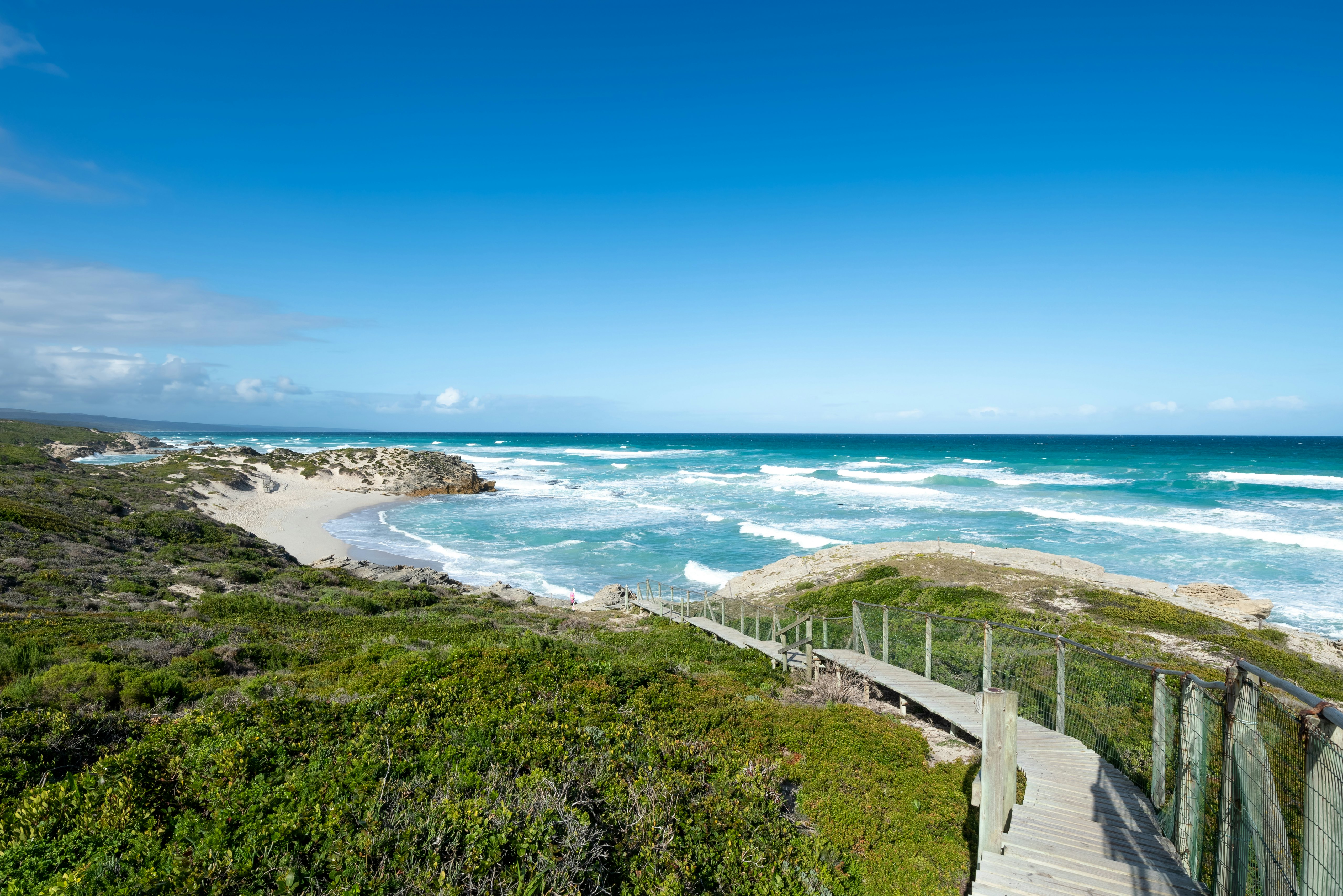
7. The Whale Trail, Garden Route
Best hiking route for whale watching
Distance: 55km (34 miles)
Estimated time to complete: 5 days
Level of difficulty: Moderate
The Whale Trail, an unforgettable 55km (34-mile) hike through the mountains and then along the coastline of the Western Cape’s diverse De Hoop Nature Reserve, offers one of the most spectacular land-based whale-watching experiences in the world. It’s best done between June and December, when the Indian Ocean around the southernmost tip of Africa becomes an important nursery ground for southern right whales, but the trail can be walked year-round. The fynbos vegetation, sweeping ocean views (look out for dolphins) and opportunities to swim in rock pools make this a very popular multiday trail and, aside from a strenuous climb on the first day and a long beach walk on day 4, it’s relatively unchallenging. Children over the age of 8 are permitted, so it’s a good option for fit families with older kids.
Planning tip: Gather friends for this hike – you can book only for 6 or 12 people. You’ll be staying in comfortable well-equipped self-catering cottages, and need to provide your own food and bedding, but you won’t need to hike with it. The trail begins at Potberg cottage, where each hiker is allocated a 70-liter (15-gallon) box that (for a fee) will be transported from cottage to cottage. A detailed trail map is available online.
8. Leopard Trail, Baviaanskloof Wilderness Area, Eastern Cape
Best for hikers seeing solitude
Distance: 63km (39 miles)
Estimated time to complete: 4 days
Level of difficulty: Moderate to challenging
The dramatic Baviaanskloof mountains form one of the largest wilderness areas in South Africa and – aside from one narrow, nail-biting 4WD pass – are inaccessible unless you are on foot. The 63km-long (39-mile) Leopard Trail traverses this pristine and enormously underrated area, leading hikers down rumpled valleys, over craggy mountains and through extraordinary gorges that dwarf even the tallest of humans. The trail is tough and rocky, and is steep in places, but gear and food is transported for you between the basic but comfortable overnight mountain huts. The night skies out here in this pristine wilderness area are well worth hiking for.
Planning tip: The Leopard Trail is growing in popularity and, as bookings open a year in advance, you need to plan well ahead. The trail is limited to 12 people; there are three four-bed huts and you book per hut, not per person.
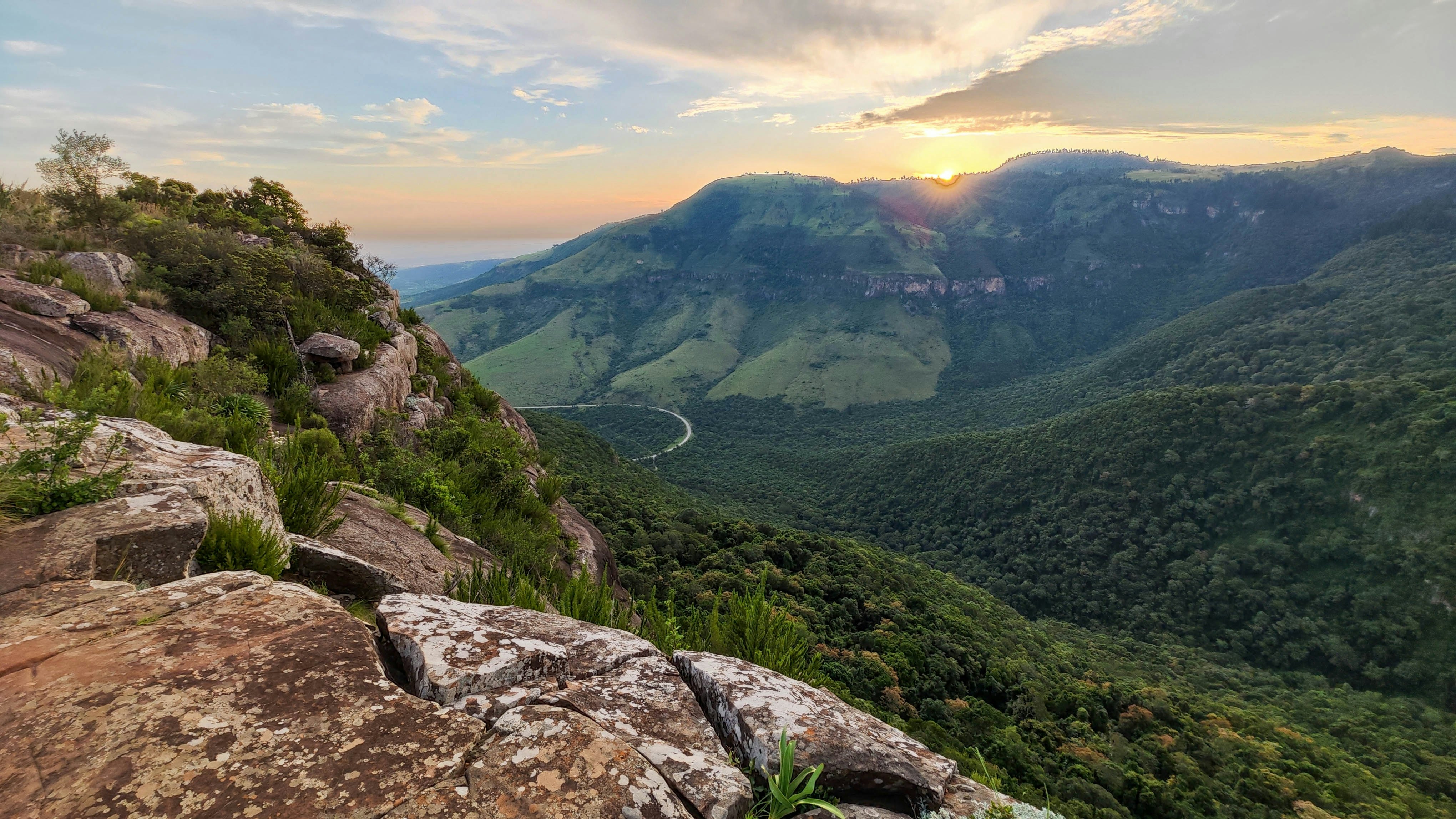
9. Amatola Trail, Amatola Mountains, Eastern Cape
Best trail for a physical challenge
Distance: 100km (62 miles)
Estimated time to complete: 6 days
Level of difficulty: Challenging
The Amatola, which winds from Maden Dam (near Qonce, formerly King Williams Town) across the Eastern Cape’s Amatola Mountains to magical Hogsback village, is widely said to be South Africa’s most challenging hutted trail. The six-day self-supported trek is mentally and physically demanding, with terrain crisscrossed by streams and littered with rocks and roots; the ascents are relentless (elevation gain is 4900m/16,076ft) and the descents demanding. The rewards, however, are immense: the sweeping mountain vistas are sublime, and enchanting pathways lead through misty forests into pretty pockets of grasslands. There is an abundance of birdlife, and many waterfalls and rock pools to look forward to, too.
Planning tips: Booking is done through Amatola Trails, who can also assist with all logistics. Give yourself at least two days to chill out in Hogsback at the end of the trail; the artsy town has some wonderful accommodations and restaurants.
10. Otter Trail, Garden Route
Best for off-grid adventures
Distance: 42km (26 miles)
Estimated time to complete: 5 days
Level of difficulty: Moderate to challenging
The Garden Route National Park’s iconic Otter Trail weaves through a stunning coastal landscape: it traverses pristine beaches, flanks rugged cliffs and plunges through gorgeous coastal forests, offering dramatic ocean views along the way. It’s wonderfully remote: there is no phone reception, and the surrounding area is accessible only to Otter Trail hikers. Don’t be fooled by the short distances, however, this is not a simple walk in the park. The well-marked trail is rocky in some places and incredibly steep in others, plus there are challenging river crossings, too. The trail starts at Storms River Mouth Rest Camp and ends at Natures Valley; you need to be self-sufficient for the duration of your hike, and you will stay in rustic huts en route.
Planning tip: Bookings open one year in advance; space is limited to 12 hikers and books up almost immediately. Hiking Trail Transfers can assist with transport to/from the start and/or finish, and also rents out fully equipped backpacks.








